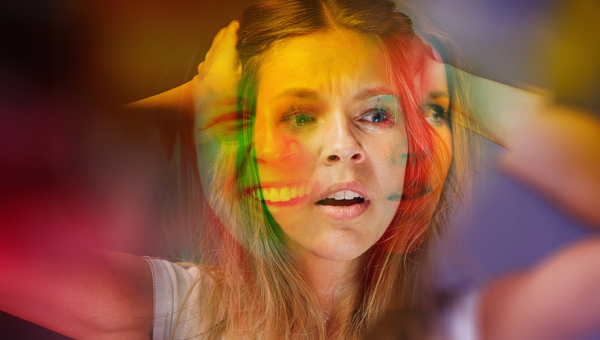Bipolar Disorder: Navigating the Highs and Lows
Apr 22, 2024
Bipolar disorder is a mental health condition characterized by extreme mood swings that include emotional highs (mania or hypomania) and lows (depression). These mood swings can affect sleep, energy, activity, judgment, behavior, and the ability to think clearly.
What is Bipolar Disorder?
Bipolar disorder, formerly known as manic-depressive illness, involves episodes of mood swings ranging from depressive lows to manic highs.
Types of Bipolar Disorder
- Bipolar I Disorder: Defined by manic episodes that last at least 7 days or by manic symptoms that are so severe that immediate hospital care is needed. Depressive episodes occur as well, typically lasting at least 2 weeks.
- Bipolar II Disorder: Defined by a pattern of depressive episodes and hypomanic episodes, but not the full-blown manic episodes that are typical of Bipolar I Disorder.
- Cyclothymic Disorder: Periods of hypomanic symptoms as well as periods of depressive symptoms lasting for at least 2 years (1 year in children and adolescents); however, the symptoms do not meet the diagnostic requirements for a hypomanic episode and a depressive episode.
Symptoms of Bipolar Disorder
1. Manic Episodes:
- Increased energy, activity, and restlessness
- Excessively “high,” overly good, euphoric mood
- Extreme irritability
- Racing thoughts and talking very fast, jumping from one idea to another
- Distractibility, inability to concentrate
- Decreased need for sleep
- Unrealistic beliefs in one’s abilities and powers
- Poor judgment
- Spending sprees, increased sexual drive
- intrusive, or aggressive behaviorProvocative,
2. Depressive Episodes:
- Lasting sad, anxious, or empty mood
- Feelings of hopelessness or pessimism
- Feelings of guilt, worthlessness, or helplessness
- Loss of interest or pleasure in activities once enjoyed, including sex
- Decreased energy, a feeling of fatigue or being “slowed down”
- Difficulty concentrating, remembering, making decisions
- Restlessness or irritability
- Sleeping too much, or having trouble sleeping
- Change in appetite and/or unintended weight loss or gain
- Chronic pain or other persistent physical symptoms not caused by illness or injury
- Thoughts of death or suicide, or suicide attempts
Causes of Bipolar Disorder
- Genetics: Bipolar disorder tends to run in families, suggesting a genetic component. However, no single gene causes the disorder.
- Brain Structure and Function: Brain imaging and other studies indicate that the brains of people with bipolar disorder may differ from the brains of people who do not have the disorder.
- Environmental Factors: Stress, abuse, significant loss, or other traumatic experiences may trigger or exacerbate the disorder.
Risk Factors
- Family History: Having a first-degree relative, such as a parent or sibling, with bipolar disorder.
- Periods of High Stress: Such as the death of a loved one or other traumatic experiences.
- Alcohol Abuse: These can trigger or worsen the symptoms of bipolar disorder. Drug or
Impact on the Brain and Body
Bipolar disorder affects the brain's structure and function. It can cause changes in brain regions that regulate mood and behavior, such as the prefrontal cortex and the amygdala. These changes can lead to difficulties in emotional regulation and cognitive function.
Pathophysiology of Bipolar Disorder
- Neurotransmitter Imbalance: Imbalances in neurotransmitters like serotonin, norepinephrine, and dopamine are linked to mood swings.
- Circadian Rhythm Disruptions: Bipolar disorder is associated with disruptions in the body’s natural sleep-wake cycle, contributing to mood swings.
- Inflammation and Oxidative Stress: Emerging research suggests that inflammation and oxidative stress might play a role in the pathophysiology of bipolar disorder.
Indian Context
Bipolar disorder is often underdiagnosed and misunderstood in India due to cultural stigma and lack of awareness. According to the Indian Journal of Psychiatry, the prevalence of bipolar disorder in India is about 1% among the general population. Increased awareness and access to mental health services are essential for improving diagnosis and treatment.
Managing Bipolar Disorder
1. Psychotherapy:
- Cognitive Behavioral Therapy (CBT): Helps individuals understand and change negative thought patterns.
- Psychoeducation: Educates patients about the disorder and how to manage it.
- Interpersonal and Social Rhythm Therapy (IPSRT): Focuses on stabilizing daily rhythms and routines to help manage mood swings.
2. Medications:
- Mood Stabilizers: Such as lithium, valproate, and carbamazepine.
- Antipsychotic Medications: Used to treat severe manic episodes.
- Antidepressants: May be used in combination with a mood stabilizer to treat depressive episodes.
3. Lifestyle Modifications:
- Regular Exercise: Can help manage symptoms and improve overall health.
- Healthy Diet: Supports brain health and overall well-being.
- Consistent Sleep Schedule: Helps regulate mood and prevent mood swings.
4. Professional Help:
- Counseling Services: Access to trained mental health professionals is crucial for managing bipolar disorder.
- Support Groups: Provide a platform for sharing experiences and gaining support from others with similar challenges.
Conclusion
Bipolar disorder is a serious mental health condition that requires comprehensive management strategies. Understanding the causes, symptoms, and treatment options can help individuals manage the disorder effectively. With appropriate treatment and support, individuals with bipolar disorder can lead fulfilling lives.
References:
- National Institute of Mental Health (NIMH) - Bipolar Disorder
- American Psychological Association - Bipolar Disorder
- World Health Organization - Mental Health
- Psychology Today - Bipolar Disorder
- Indian Journal of Psychiatry









